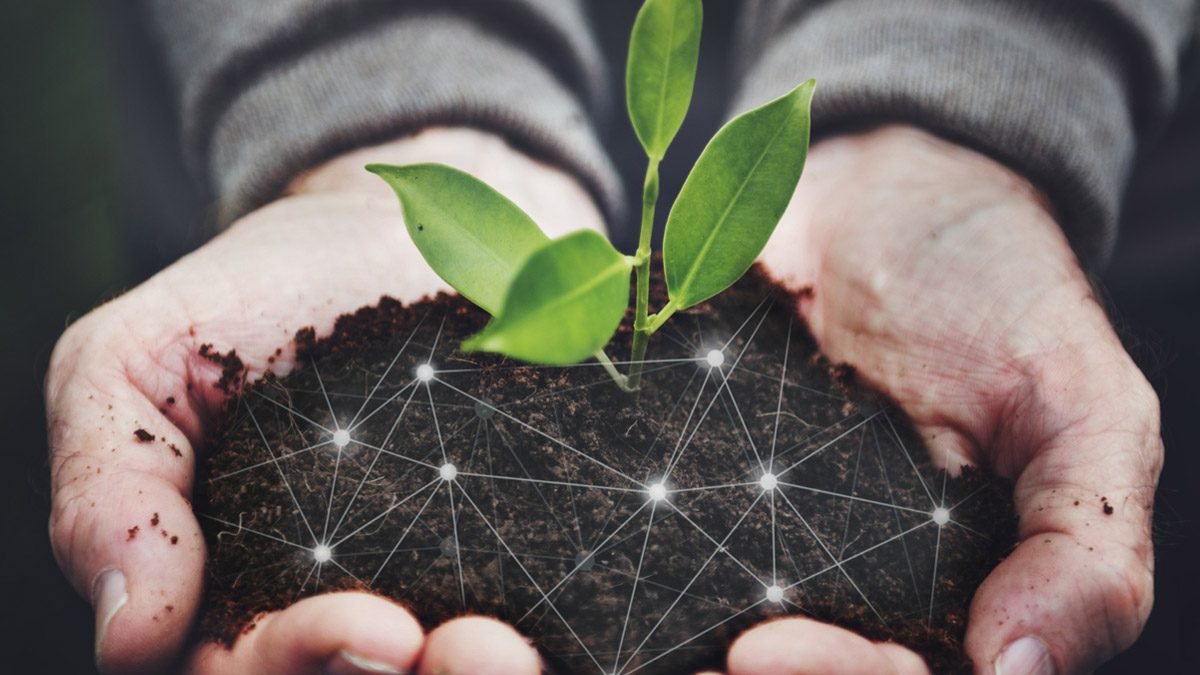The Global Demand for Food has been rising in recent years, according to recent reports, which has put immense pressure on the agricultural sector, posing an immense threat to people across the world. In such need of food resources, traditional farming methods would only hinder the production rate, resulting in more wastage and inefficiency in food production. To counter this issue, the IoT in Agriculture has brought about a new revolution in farming by integrating sensors, data-driven support, which helps farmers to keep track of soil health as well as track livestock while also lessening environmental degradation.

How IoT works in Agriculture
IoT in agriculture is brought about by integrating the use of smart sensors and data analytics to help farmers improve their production and efficiency. By implementing this technology, farmers will be able to determine factors like the amount of fertilizers and pesticides to use so that they can maximize their supply.
Sensors like soil sensors and weather trackers can be implemented to help farmers determine accurate data, which can then help them to also improve every aspect of their work from livestock management to crop farming. Although the demand for IoT-based farming has still not been fully implemented, it has certainly grown considerably over the years.
Uses of IoT in the real-world agricultural sector
There have been many applications of IoT in the real world, which have benefited the farmers over conventional farming methods.

Weather stations have been consistently used combined with various smart farming sensors to collect data from the land and send it to the farmers. This helps them collect weather data and conditions so that they can plan out the next crops to plant and improve their farming precision. IoT sensors also help in tracking irrigation and optimizing the water usage as well, preventing over-irrigation.
Another element of IoT can be seen in crop management devices, where devices are placed in the soil to collect data about the crops, such as precipitation, water retention, and crop health in general. Farmers can prevent any diseases that can take place due to this monitoring guided by IoT sensors.
Cattle management is another important aspect where IoT sensors can come to play. Lots of IoT sensors can be installed on the livestock so that farmers can track the cattle’s health, well-being as well as their physical location. This helps them keep track of the livestock location as well as separate the unwell animals from the healthy ones, controlling infections among the cattle. It comes mostly in the form of collars which can be put across the neck of the cattle.

Robots and Unmanned Aerial Vehicles (UAVs) have revolutionised the aspect of farming for the people. These drones have way more mobility than traditional aeroplanes and can do way more tasks that normally require human labor. Robots have been innovated over the years so that farmers have an easier time over management of their fields. The tractors in modern times come automated so they have to only set a route for the tractors and plan the work hours where they can work driverless and provide easier and smarter farming.
Challenges of using IoT in farming
Although IoT sensors and devices yield a lot of advantages for farmers, they still come with their own set of problems for the producers.
Firstly, the cost of investments for the required infrastructure for these devices to function is very high, which makes it difficult for small farms to integrate the infrastructure that they need to improve their produce
Furthermore, a lot of farms are located in really remote areas where connectivity is scarce, making it harder for the producers to set up the infrastructure for their lands.
All the analytics that these devices produce will require the farmers to have considerable knowledge to actually operate the machine and make use of the data. They will have to learn and possess adequate analytical knowledge if they want to make full use of the devices

Securing the system is another important factor that needs to be adopted by the farmers, as these devices are highly vulnerable to cybersecurity threats and data breaches, which will directly affect production.
Conclusion
The IoT devices and sensors have revolutionised the agricultural sector by helping the farmers enhance sustainability, productivity, and efficiency. By using these devices, farmers can maximize their farming precision, track crop and livestock health with full data analytics, and better prepare their crops based on weather and soil conditions. Although challenges are still present in terms of cost, privacy and connectivity, the sector is tackling these issues by integrating AI, 5G, and easier accessibility to the people. The IoT agriculture is set to reform the future of food production, providing more sustainable and efficient farming solutions to tackle the global food supply in the future.